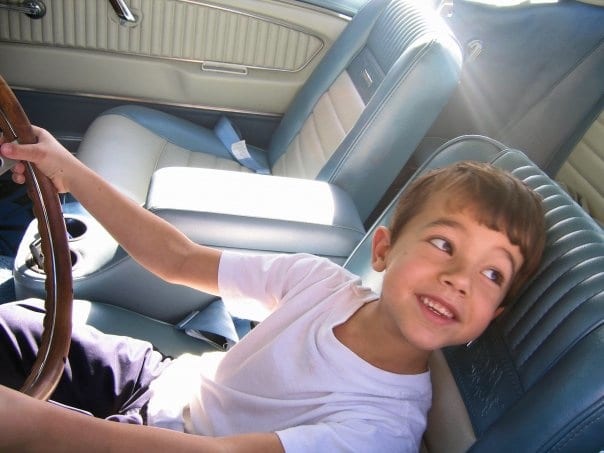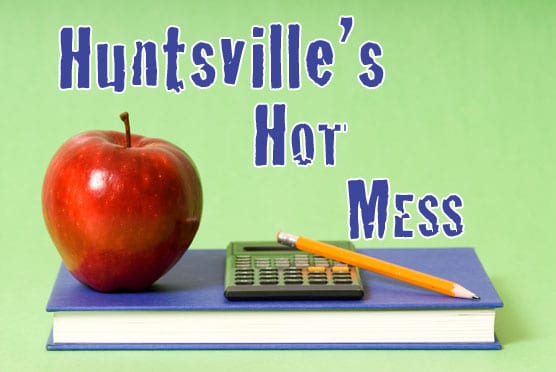The Perfect Child

My son has epilepsy. And it takes every ounce of love and courage I have to say it.
Seven years ago, I had the perfect child. Aidan was born with big, chocolate brown eyes, long eyelashes and a beautiful bow-tie mouth. At 9 months, he was crawling and exploring every inch of the world within his reach. From time to time, he would stop in his tracks, tilt his head and appear deep in thought. After a few seconds, he again was on his way. I had talked with his pediatrician about his faraway looks, but without more to go on, and no other symptoms, there wasn’t anything he could tell us. Seizures were never a consideration. At least for me.
Childhood seizures are more common than most think – about 45,000 children are diagnosed each year in the United States – and occur for a number of reasons. Most childhood seizures are “febrile seizures,” which are caused by a sudden and dramatic rise in temperature. Although scary, most childhood seizures are not life-threatening and do not reoccur, which means they are not epilepsy.
Seizures are triggered by abnormal electrical activity that causes a change in behavior, sensation, movement and sometimes consciousness. By definition, epilepsy is two or more unprovoked seizures, meaning they are not caused by some external factor, such as fever. Most people who have had at least two seizures will have more.
Aidan had his first noticeable seizure at around nine months. While rocking together late at night, he suddenly stiffened. His arms and legs became fully extended, and I thought he stopped breathing. I did.
After that first seizure, and the many others that would follow, we were referred to a pediatric neurologist, who still wasn’t sure Aidan was experiencing seizures.
We were told to write down the number of episodes he had each day and learned our first lesson in diagnosis: details count. After going over what we were seeing for what felt like a million and one times, we learned that as our neurologist listened, he was comparing our story to a detailed map of the brain’s function. Depending on how well the “stories” matched up made a big difference in the diagnosis. So, we wrote down what we were seeing and even managed to videotape a few of his episodes.[pullquote type=”2″ align=”right”]
Aidan had his first noticeable seizure at around nine months…His arms and legs became fully extended, and I thought he stopped breathing. I did.
[/pullquote]
The neurologist then ordered an MRI, which was normal, and Aidan was started on one anti-seizure medication, then another. After no progress, we spent Memorial Day weekend in the hospital with Aidan’s head dotted with electrodes that recorded his brain activity. Again, the test was normal.
After a year of more questions than answers and with Aidan’s first year of life punctuated with terrifying episodes we couldn’t explain, we still didn’t know more than we did at nine months. Our neurologist was as frustrated as we were and referred us to a colleague at St. Louis Children’s Hospital three hours away.
A turning point
After another overnight EEG sleep study where Aidan’s brain activity was recorded and this time he was videotaped, we finally had an answer.
Epilepsy.
The scale was beginning to move toward the point where we now had slightly more answers than questions, the biggest one being: What do we do now?
First, that meant getting Aidan on medication that would treat the specific type of seizure he was experiencing. There are more than 30 types of seizures, and the more than 20 commonly prescribed anti-seizure medications on the market are used solely and in conjunction with other epileptic drugs to treat each type. Getting the right combination is a matter of know-how – and luck. Researchers still don’t understand exactly why certain medications are effective at treating seizures; they just know that they are.
Two new medications were introduced, then a third. And although the number of Aidan’s seizures dropped from up to 17 a day to a fantastic seizure-free two weeks, they did not stop altogether. And adding or substituting a new medication was unlikely to help. After two medications fail to adequately control or stop seizures, the possibility of another drug being effective is less than 3 percent.
After eight months, our neurologist again laid out our options, and we soon began tests to determine if Aidan was a candidate for epilepsy surgery. Once considered a last resort, neurologists are considering surgery much earlier than ever before because of its increased safety and efficacy – and the hope that you can “fix” the problem and set straight any deficiencies before the child begins school or wants to drive. The risk of mortality and complications is very low, despite the fact it is surgery on the brain, which means there are lots of unknowns.
As we prepared for surgery, the question on everyone’s mind was: “where specifically in the brain are the seizures coming from?” To answer that question meant yet another overnight EEG video study, with Aidan’s head wrapped like a mummy, a rainbow of wires leading from his head to a child-size backpack that became his shadow for three long days. A sedated PET scan, SPECT scans, psychological testing and an MRI followed.
Surgery
Still, as Aidan headed into surgery we didn’t know where this “electrical storm” in his brain was starting. And we certainly didn’t know why, which isn’t unusual. In seven out of 10 cases that question goes unanswered. What we did know is that the effects of epilepsy are cumulative and progressive. If gone untreated, his development could become increasingly delayed and he could face an increased risk of injury and even death. With surgery, his seizures could be reduced or eliminated, and his cognitive skills could get back on track.
That is, of course, if they found the seizure focus, which they did not, despite placing electrodes on his brain in three different places during three separate surgeries.
As a last resort, doctors presented us with another option, a procedure called MST or Multiple Subpeal Transection, a surgical technique that cuts certain connections between nerve cells. They thought it might help. But then again it might not. And any additional surgery meant facing a plethora of surgery risks – stroke and infection being of most concern. After weighing our options, we agreed with doctors that we should go the full measure. We had everything to gain. It was thinking about what I could lose that was most difficult.
Aidan endured the experience with a strength of spirit that astonished everyone who cared for him. And after two trips to the hospital, three weeks and five surgeries, we came home dejected, exhausted, thankful and even hopeful, which lasted an incredible seizure-free two months. Then, the seizures returned, taking away any hope of the “fix” I had longed for. I believed in science and medicine, which failed me. I also had faith in God. And the road past believing He had failed us has been long.
The experience also cemented what I had so vehemently and irrationally refused to admit: My son has epilepsy. His childhood was not and would never be normal. His future hangs in the balance.
One day at a time
Of course, life doesn’t stop or even slow in the face of unfolding personal drama. Before surgery, we focused all our energy into doing everything possible to understand the root of Aidan’s seizures and stop them. Post surgery, we put that same energy into furthering his development, the most important being his speech. We constantly find ourselves asking, “can he do this task – or won’t he?” Other important questions relate to what is affecting his development and speech – the seizures themselves, his medication or both? Also, what do we do about it?
If living with epilepsy can summed up in one word, it’s “worry.” Worrying he will seize in public or at school. Worrying he’ll fall and hurt himself. Worrying about how others will treat him. Worrying about his development and if we’re making the best educational decisions for him. Worrying about providing the right discipline and guidance. Worrying for the future man he will become.
And if living with epilepsy equals worry, it requires patience in equal dose. Not being physicians, it’s easy to armchair quarterback those making the decisions. And to a big degree, it’s our job. We are our children’s biggest advocates. We choose physicians we can trust and hope they make the best decisions based on what is known. Unfortunately, with any disorder affecting the brain, there are lots of unknowns.
Until we know more, we’re doing all we can in the meantime to help Aidan live the fullest life possible. Aidan began kindergarten at 5 and received speech, occupational and physical therapy. At 7, his PT goals have been met, but fine motor skills and speech in particular remain a huge challenge. He can write his name, say his ABCs, beat every kid on the playground in his monkey bar skills, but he has yet to read or do math. The fact that he is not alone is small comfort. Of the more than 500,000 kids under 18 who have seizures, about 65 percent have some kind of special need.
Despite the fact Aidan still had one or two seizures a month while on two medications, we have been able to wean him from the drug with the greatest known side effects, especially regarding speech. And the good news is that his seizures are decreasing – and his speech is improving. Instead of six seizures a month, he now may have one or two – and sometimes none. The caveat with this piece of good news is that we suspect he may be having seizures early in the morning, as he is coming out of deep sleep – also not unusual in those with seizures.
In the meantime, we continue to work on finding the drug combination that best works for him. If the seizures continue, other options exist, such as vagus nerve stimulator, the ketogenic diet and complementary forms of medicine, which we may consider, keeping in mind that with each treatment comes a side effect that may outweigh any potential benefit.
It’s unlikely he will outgrow his seizures, even though about 60 percent of children do. But there is always hope, and that’s all anyone really has. We don’t know why this has happened – in fact, doctors don’t know the answer to that in 70 percent to 75 percent of cases – but that burning question has kept me up many useless nights agonizing over the unknown.
Heavy on my heart through this entire experience has been disappointment, sadness and even despair over his diagnosis, and I’ve mourned the loss of my perfect child. It wasn’t until a year after surgery that I could begin to focus not on loss and what this disorder has taken away from Aidan and our family but instead on all the things my beautiful child has to offer.
A sign hangs in the pediatric ICU of St. Louis Children’s Hospital that reads: “This experience WILL change you. Make it for the better.”
That advice has haunted me, and I have taken it to heart. Aidan may never live a “normal” life – without epilepsy, neurologists and extra help in school – but he will live a life full of love, support, and hope.
No matter what this cursed disease throws our way, we will never give up, and we will never let this tear our family apart, despite its strong grip. Aidan is, after all, a lesson in love. He’s a happy boy with big, chocolate brown eyes, long eyelashes and a beautiful bow-tie mouth. And he is perfect.





